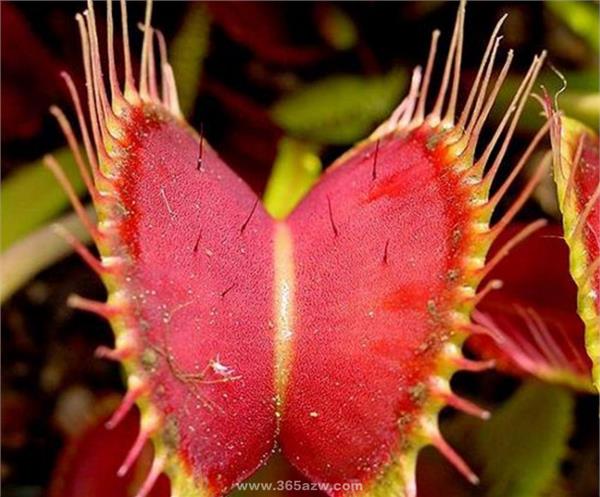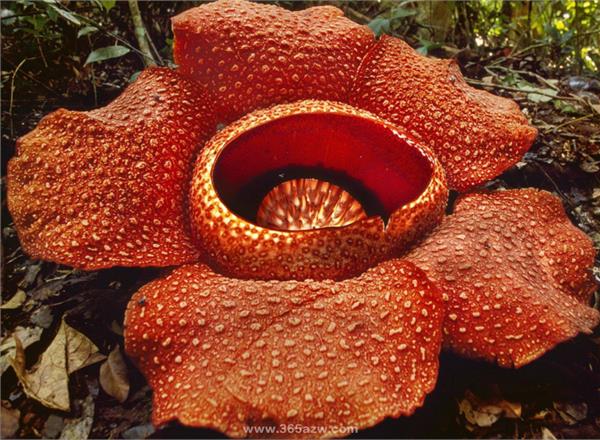What kind of man-eating plants are there disputes over?
There are many magical plants in the plant world. the magic of some plants makes many people feel very baffled, but some of them exist in legendary plants, and whether they exist or not has not been completely concluded. for example, the magical man-eating plants, let's take a look at what are man-eating plants and the controversy over man-eating plants.

What is a man-eating plant?
Man-eating plants are legendary plants that can eat people. And many newspapers and magazines have reported about man-eating plants, some in the primeval forests of the Amazon in South America, and some on the Indonesian island of Java. Although these reports give a detailed description of the morphology, habits and locations of different man-eating plants, so far there is no direct evidence of man-eating plants, which makes them mysterious and suspicious.

What are the cannibal plants?
1. Sun-round flowers
In the dense virgin forests and vast swamps of the Amazon basin of South America, there is a formidable man-eating plant called Solanum nigrum. The leaves of solar flowers are generally about 1 meter long, and the flowers are scattered on top of the leaves.
If people accidentally touch it or pick it, the slender leaves will immediately roll around like bird claws, hold people tightly, and drag them down on the wet grass until they are unable to move. At this time, the big spiders hiding on the sun rings swarmed onto the victim and had a good meal. When the spider eats the human body, digesting the excrement becomes the fertilizer for the sun-ring flower.
2. Cannibalism tree
In some parts of Madagascar, Africa, there is a tree that eats people. It is shaped like a giant pineapple, about 3 meters high, with a cylindrical trunk and snake-like branches, so the locals call it the "snake tree". This kind of tree is so sensitive that when a bird lands on its branches, it will soon catch it and disappear. Risel, an American botanist, experienced the power of the snake tree in 1937: when he accidentally touched the branch, his hand was quickly entangled, and it took a lot of effort to break free, but a large piece of meat was pulled off the back of his hand.

3. African cannibalism
Cannibalism is a mysterious plant with some animal-like habits. At least ten fresh lives must be swallowed in order to produce a flower, and one in ten, that is, one of the ten flowers, can receive a small green cannibal fruit through constant living life support!
After eating countless passing insects, birds, animals and even innocent passers-by, they also devoured the other nine small fruits that bear fruit at the same time. In a century, a green fruit of cannibal flowers will ripen from green to brownish red and then turn into red drops of blood. It became a treasure in the world at that time. Can be made into a panacea to improve the ability, but it is just a legend, no one has ever seen the scarlet cannibal fruit.
4. Trapping vine
In the tropical virgin forest of Panama, there is also a kind of "man-trapping vine" similar to Dien Bai. If you accidentally touch the vine, it will hold people tightly like a python until strangled to meet the nutrients needed for its own growth.
If a person or an animal touches this kind of tree, the branches with hooks will rush up, surround the person or animal and stab them. If others do not find out and help, it will be very difficult to get out of this predicament. Therefore, when you meet this kind of plant, do not touch it out of curiosity.
5. Circle the tree
In the Brazilian forest, there is a shrub up to three or four meters high, called the Yanipindar tree. The branches with hooks come together to circle people or animals and stab them. Without the discovery and assistance of others, this kind of predicament is very difficult to get rid of.

Dispute over cannibalism plants
In fact, the controversy about the existence of cannibalism also ensues. Many newspapers and magazines continue to report information about cannibalism. Some say that it is in the primeval forests of the Amazon River basin in South America, and some say that it is on the island of Java in Indonesia. Although these reports give a detailed description of the morphology, habits and locations of different man-eating plants, it is very regrettable, because in all these reports, there is no direct evidence of man-eating plants. There are no photos or specimens, and there is no exact indication of which family or genus it is. For this reason, many botanists have doubts about the existence of man-eating plants. Therefore, it is also an issue worthy of discussion.
In fact, it is a great pity, because in all these reports, no one has produced any direct evidence about the man-eating plant, nor do they have any photos or specimens, and they do not specify exactly which family or genus it is. For this reason, many botanists have doubts about the existence of man-eating plants. Therefore, it is also an issue worthy of discussion.
Related
- Wuhan Hospital Iron Tree Blooming Result Was Instantly Frightened by the Gardener Master
- Which variety of camellia is the most fragrant and best? Which one do you like best?
- What is the small blue coat, the breeding methods and matters needing attention of the succulent plant
- Dormancy time and maintenance management of succulent plants during dormancy
- Minas succulent how to raise, Minas succulent plant pictures
- What are the varieties of winter succulent plants
- How to raise succulent plants in twelve rolls? let's take a look at some experience of breeding twelve rolls.
- Attention should be paid to water control for succulent plants during dormant period (winter and summer)
- Watering experience of twelve rolls of succulent plants
- Techniques for fertilizing succulent plants. An article will let you know how to fertilize succulent plants.



